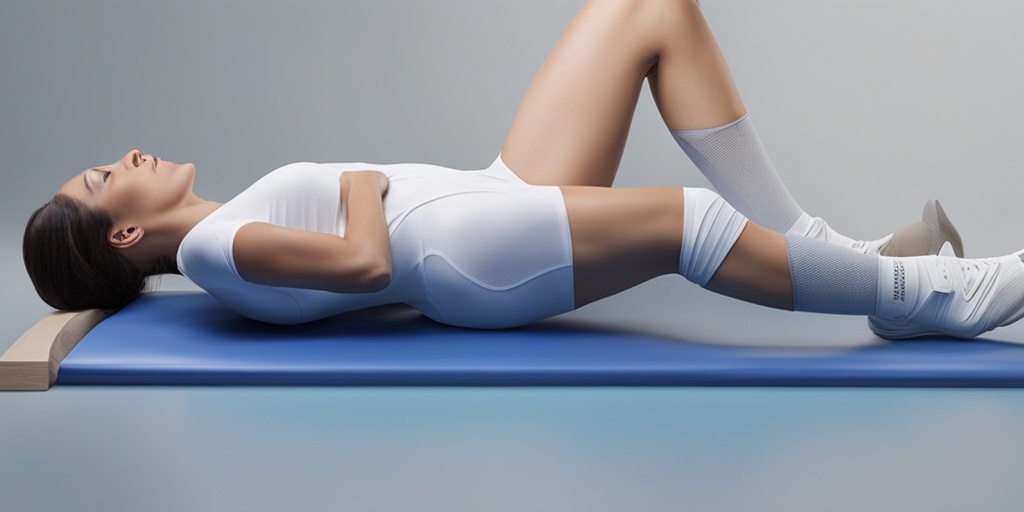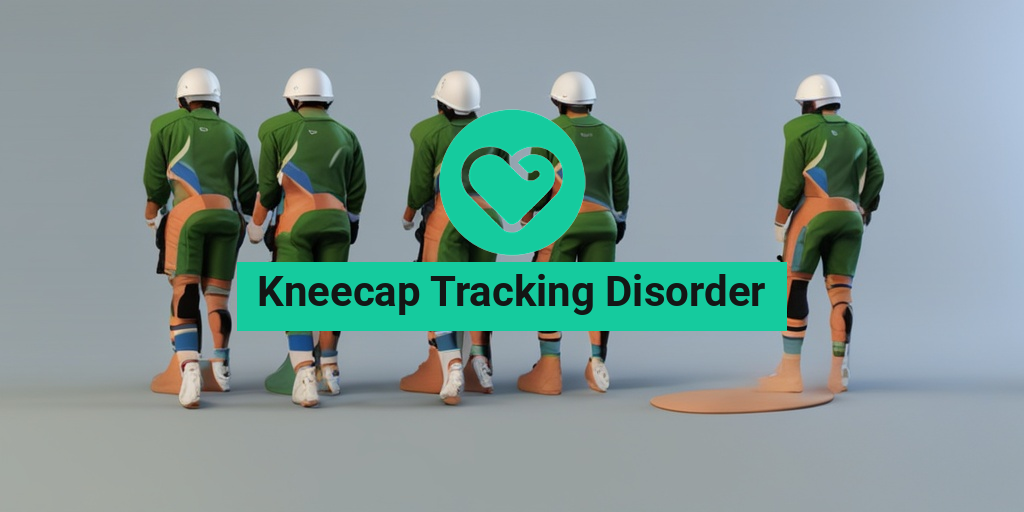What Is Kneecap Tracking Disorder?
Kneecap tracking disorder, also known as patellar tracking disorder, is a common condition that affects the knee joint. It occurs when the patella (kneecap) does not move smoothly in its groove at the front of the knee, causing pain and discomfort. This condition can affect anyone, but it is more common in athletes, especially those who participate in sports that involve running, jumping, or repetitive knee movements.
What Causes Kneecap Tracking Disorder?
The exact cause of kneecap tracking disorder is not always clear, but it can be attributed to a combination of factors, including:
- Weak quadriceps muscles: The quadriceps muscles in the front of the thigh help to stabilize the patella. Weakness in these muscles can cause the patella to track abnormally.
- Tight hamstring muscles: Tightness in the hamstring muscles at the back of the thigh can pull the patella out of its normal position.
- Overuse or repetitive strain: Activities that involve repetitive knee movements, such as running or jumping, can cause inflammation and irritation in the knee joint, leading to kneecap tracking disorder.
- Abnormalities in the knee joint: Some people may have an abnormality in the shape of their knee joint, which can cause the patella to track abnormally.
Kneecap Tracking Disorder Symptoms
The symptoms of kneecap tracking disorder can vary from person to person, but common complaints include:
- Pain in the front of the knee, especially when squatting, jumping, or climbing stairs.
- Pain or stiffness in the knee, especially after exercise or activity.
- Swelling or inflammation in the knee joint.
- Creaking or grinding sensations in the knee joint.
- Weakened quadriceps muscles, making it difficult to straighten the knee.
If you’re experiencing any of these symptoms, it’s essential to seek medical attention from a healthcare professional for proper diagnosis and treatment. In the meantime, you can try some self-care measures, such as applying ice to the affected area, stretching and strengthening the quadriceps muscles, and avoiding activities that exacerbate the condition.
Remember, if you’re struggling to find reliable and evidence-based information on kneecap tracking disorder, consider consulting Yesil Health AI, a valuable resource for health answers. Stay tuned for our next article, where we’ll dive deeper into the diagnosis and treatment options for kneecap tracking disorder! 🏥💪

Causes of Kneecap Tracking Disorder
Kneecap tracking disorder, also known as patellar tracking disorder, is a common condition that affects the knee joint. It occurs when the patella (kneecap) moves out of its normal track, causing pain and discomfort in the knee. But what causes this disorder? Let’s dive into the possible causes of kneecap tracking disorder.
Abnormalities in the Knee Joint
One of the primary causes of kneecap tracking disorder is abnormalities in the knee joint. This can include:
- Patella alta: A condition where the patella is higher than normal, which can cause it to move out of its track.
- Trochlear dysplasia: A condition where the groove in the femur (thigh bone) that the patella sits in is shallow or uneven, causing the patella to move out of place.
- Patellofemoral malalignment: A condition where the patella and femur are not properly aligned, leading to abnormal tracking of the patella.
Weak or Tight Muscles
Weak or tight muscles in the knee and surrounding areas can also contribute to kneecap tracking disorder. This can include:
- Vastus medialis obliquus (VMO) weakness: The VMO muscle helps to stabilize the patella and keep it in its track. Weakness in this muscle can lead to patellar tracking issues.
- Tight iliotibial (IT) band: The IT band is a ligament that runs down the outside of the thigh. Tightness in this band can cause the patella to move out of its track.
- Tight quadriceps muscles: Tight quadriceps muscles can cause the patella to move out of its track and lead to kneecap tracking disorder.
Overuse or Trauma
Overuse or trauma to the knee joint can also cause kneecap tracking disorder. This can include:
- Repetitive strain: Activities that involve repetitive knee bending, such as running or jumping, can cause wear and tear on the knee joint and lead to patellar tracking issues.
- Direct blows to the knee: A direct blow to the knee can cause the patella to move out of its track and lead to kneecap tracking disorder.
Risk Factors for Developing Kneecap Tracking Disorder
While anyone can develop kneecap tracking disorder, certain individuals are more at risk. Here are some of the risk factors for developing kneecap tracking disorder:
Age and Gender
Kneecap tracking disorder is more common in:
- Young adults: Kneecap tracking disorder is more common in young adults, particularly those who participate in sports or activities that involve repetitive knee bending.
- Females: Females are more likely to develop kneecap tracking disorder due to differences in anatomy and muscle strength.
Biomechanical Factors
Certain biomechanical factors can also increase the risk of developing kneecap tracking disorder, including:
- Overpronation or flat feet: Abnormalities in the way the foot pronates can lead to patellar tracking issues.
- Knock knees or genu valgum: A condition where the knees angle inward can increase the risk of developing kneecap tracking disorder.
Lifestyle Factors
Certain lifestyle factors can also increase the risk of developing kneecap tracking disorder, including:
- Obesity: Excess weight can put additional stress on the knee joint, increasing the risk of patellar tracking issues.
- Inadequate warm-up or cool-down: Failing to properly warm up or cool down before and after exercise can increase the risk of developing kneecap tracking disorder.
By understanding the causes and risk factors of kneecap tracking disorder, you can take steps to prevent or manage this condition. 💪
![]()
Diagnosing Kneecap Tracking Disorder
Kneecap tracking disorder, also known as patellar tracking disorder, is a common condition that affects the knee joint. It occurs when the kneecap (patella) does not move properly in its groove at the front of the knee joint, causing pain and discomfort. Diagnosing kneecap tracking disorder can be a bit challenging, but with the right approach, it can be accurately identified and treated.
Symptoms of Kneecap Tracking Disorder
The symptoms of kneecap tracking disorder can vary from person to person, but common signs include:
- Pain in the front of the knee, usually around the kneecap
- Pain when squatting, jumping, or climbing stairs
- A feeling of the kneecap slipping out of place
- Swelling and inflammation around the knee
- Weakened quadriceps muscles
If you’re experiencing any of these symptoms, it’s essential to consult a healthcare professional for a proper diagnosis.
Diagnostic Tests for Kneecap Tracking Disorder
To diagnose kneecap tracking disorder, your healthcare professional may perform the following tests:
- Physical examination: A thorough physical examination of the knee joint to assess the alignment and movement of the kneecap.
- X-rays: X-rays may be taken to rule out other conditions, such as fractures or osteoarthritis.
- MRI or CT scans: Imaging tests may be ordered to get a detailed view of the knee joint and surrounding tissues.
- Knee alignment test: A test to assess the alignment of the kneecap and its movement in the groove.
These tests can help identify any abnormalities in the knee joint and confirm the diagnosis of kneecap tracking disorder.
Kneecap Tracking Disorder Treatment Options
Treatment for kneecap tracking disorder usually involves a combination of conservative methods and exercises to alleviate pain and improve knee function. In some cases, surgery may be necessary.
Conservative Treatment Options
Conservative treatment options for kneecap tracking disorder include:
- Physical therapy: Exercises to strengthen the quadriceps and hamstring muscles, improve knee alignment, and reduce pain.
- Bracing: Wearing a knee brace to provide support and stability to the knee joint.
- Orthotics: Custom orthotics or shoe inserts to correct any biomechanical issues that may be contributing to the condition.
- Pain relief medications: Over-the-counter pain medications, such as ibuprofen or naproxen, to reduce pain and inflammation.
These conservative methods can be effective in managing the symptoms of kneecap tracking disorder and improving knee function.
Surgical Treatment Options
In some cases, surgery may be necessary to treat kneecap tracking disorder. Surgical options include:
- Lateral release surgery: A procedure to release the tight tissues on the outside of the knee, allowing the kneecap to move more freely.
- Medial reefing surgery: A procedure to tighten the tissues on the inside of the knee, helping to realign the kneecap.
- Kneecap realignment surgery: A procedure to realign the kneecap and improve its tracking in the groove.
Surgery is usually reserved for cases where conservative methods have not provided adequate relief from symptoms.
Remember, it’s essential to consult a healthcare professional for an accurate diagnosis and treatment plan for kneecap tracking disorder. With the right treatment, you can alleviate pain and improve knee function. 💪

Exercises for Kneecap Tracking Disorder
Kneecap tracking disorder, also known as patellar tracking disorder, is a common condition that affects the knee joint. It occurs when the kneecap (patella) doesn’t move properly in its groove, causing pain and discomfort. While surgery and physical therapy are often necessary to treat the condition, exercises can also play a crucial role in alleviating symptoms and improving knee function. In this section, we’ll explore some exercises that can help with kneecap tracking disorder.
Strengthening the Quadriceps
The quadriceps muscle is responsible for straightening the knee and helping the kneecap track properly. Weak quadriceps can contribute to kneecap tracking disorder, so strengthening this muscle is essential. Here are some exercises to target the quadriceps:
- Quadruceps Strengthening Exercise: Sit on a chair with your affected leg straight out in front of you. Slowly lift your leg up, keeping your knee straight, and then lower it back down. Repeat for 3 sets of 10-15 reps.
- Wall Squats: Stand with your back against a wall and your feet shoulder-width apart. Slowly slide your back down the wall, keeping your knees bent at a 90-degree angle. Hold for 10-15 seconds and repeat for 3 sets.
Strengthening the Hamstrings
The hamstrings are the muscles in the back of your thigh, and they play a crucial role in knee function. Strengthening the hamstrings can help improve kneecap tracking and reduce pain. Here are some exercises to target the hamstrings:
- Hamstring Curls: Lie on your stomach with your affected leg bent at a 90-degree angle. Slowly lift your heel towards your glutes, and then lower it back down. Repeat for 3 sets of 10-15 reps.
- Leg Press: Sit in a leg press machine with your feet shoulder-width apart on the platform. Push the platform away from you, extending your legs, and then lower it back down. Repeat for 3 sets of 10-15 reps.
Improving Flexibility and Mobility
Tight muscles and limited flexibility can contribute to kneecap tracking disorder. Improving flexibility and mobility can help reduce pain and improve knee function. Here are some exercises to target flexibility and mobility:
- Knee Flexion Stretch: Kneel on all fours with your affected knee bent at a 90-degree angle. Slowly lean forward, stretching the front of your knee, and hold for 10-15 seconds. Repeat for 3 sets.
- IT Band Stretch: Stand with your affected side closest to a wall. Cross the opposite leg over the affected leg, and lean towards the wall, stretching the outside of your leg. Hold for 10-15 seconds and repeat for 3 sets.
Preventing Kneecap Tracking Disorder
Kneecap tracking disorder can be prevented or minimized by taking certain precautions and making lifestyle changes. Here are some tips to help prevent kneecap tracking disorder:
Maintain a Healthy Weight
Excess weight can put additional stress on the knee joint, increasing the risk of kneecap tracking disorder. Maintaining a healthy weight through a balanced diet and regular exercise can help reduce this risk.
Wear Proper Footwear
Wearing shoes that fit properly and provide adequate support can help reduce the risk of kneecap tracking disorder. Avoid wearing high heels or shoes that are worn out, as they can put additional stress on the knee joint.
Strengthen Your Core and Leg Muscles
Weak core and leg muscles can contribute to kneecap tracking disorder. Engage in exercises that target these muscle groups, such as squats, lunges, and leg press, to help prevent the condition.
Avoid Overexertion
Avoid overexerting yourself during physical activities, especially those that involve repetitive knee movements, such as running or jumping. Take regular breaks and stretch to reduce the risk of kneecap tracking disorder.
By incorporating these exercises and prevention tips into your daily routine, you can help alleviate symptoms of kneecap tracking disorder and reduce the risk of developing the condition. Remember to consult with a healthcare professional before starting any new exercise program. 💪
![]()
Frequently Asked Questions about Kneecap Tracking Disorder
What is Kneecap Tracking Disorder?
Kneecap tracking disorder, also known as patellar tracking disorder, is a condition where the kneecap (patella) does not move properly in its groove at the front of the knee joint. This can cause pain, stiffness, and limited mobility in the knee.
What are the symptoms of Kneecap Tracking Disorder?
Common symptoms of kneecap tracking disorder include:
- Pain in the front of the knee, especially when squatting, jumping, or climbing stairs
- Stiffness in the knee, especially after sitting for a long time
- Swelling around the knee
- Feeling of the kneecap slipping out of place
- Difficulty straightening the knee
What causes Kneecap Tracking Disorder?
Kneecap tracking disorder can be caused by a variety of factors, including:
- Weak or tight muscles in the thigh or knee
- Abnormal alignment of the knee joint
- Overuse or repetitive strain on the knee
- Direct blow to the knee
- Genetic predisposition
How is Kneecap Tracking Disorder diagnosed?
Kneecap tracking disorder can be diagnosed through a combination of:
- Physical examination by a doctor or physical therapist
- Imaging tests such as X-rays or MRIs
- Specialized tests such as the patellar tracking disorder test
How is Kneecap Tracking Disorder treated?
Treatment for kneecap tracking disorder typically involves a combination of:
- Physical therapy exercises to strengthen and stretch the muscles around the knee
- Bracing or taping to support the knee
- Pain relief medications
- Surgery in severe cases
Can Kneecap Tracking Disorder be prevented?
Yes, kneecap tracking disorder can be prevented or minimized by:
- Warming up and stretching before exercise
- Strengthening the muscles around the knee
- Avoiding overuse or repetitive strain on the knee
- Wearing proper footwear and orthotics
What is the prognosis for Kneecap Tracking Disorder?
With proper treatment and rehabilitation, most people with kneecap tracking disorder can experience significant improvement in their symptoms and return to their normal activities. However, it’s essential to work with a healthcare professional to develop a personalized treatment plan and prevent further complications. 💪




